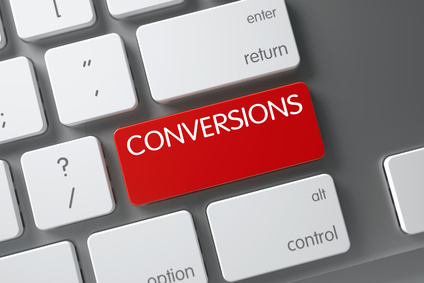
 Improving paid search campaigns for eCommerce sites can be a daunting task. The initial setup and strategy may have been enough to get you started, but when conversions are low it’s time to get creative. What makes it even harder is the low performing campaign is offering you little data to evaluate so that adjustments can be made. You must first figure out what it is that you can optimize. By evaluating 5 different components of your Adwords campaign, you can optimize your low performing campaign by focusing on eCommerce advertising, branding exposure or whatever your objectives may be.
Improving paid search campaigns for eCommerce sites can be a daunting task. The initial setup and strategy may have been enough to get you started, but when conversions are low it’s time to get creative. What makes it even harder is the low performing campaign is offering you little data to evaluate so that adjustments can be made. You must first figure out what it is that you can optimize. By evaluating 5 different components of your Adwords campaign, you can optimize your low performing campaign by focusing on eCommerce advertising, branding exposure or whatever your objectives may be.
1. Goals for Ecommerce Advertising Campaigns
What are the goals of your campaign? Most obviously, the campaign goals will be conversion-related. If conversions are down, your goals need to be prioritized. You will want to focus on site engagement and brand awareness. Site engagement can be used to gauge the quality of traffic you are driving. Utilizing Google Analytics you can optimize the performance by focusing on engagement metrics. This will help you get a closer look at the metrics so you can dig deeper. If brand awareness is a top goal, take some time to evaluate the quality of the traffic coming to your website. Bring your attention to your audience targeting and ad copy and watch any improvements in your campaign.
2. Conversions
Here is your opportunity to get creative with alternative conversions. Is it possible that the majority of your conversions are happening offline? Consider tracking these conversions with a CRM. If your ad copy includes a phone number, that could be where your conversions are happening. Telephone tracking can be done with help from a free call tracking tag from Google. This way you can see if a user calls you after viewing your ad. This is especially helpful for tracking eCommerce advertising where many users prefer to place orders over the phone. It never hurts to have more data to assist you in the decision making process. By setting up goals in Google Analytics, you can keep an eye on some of your softer conversions and import them into Adwords.
3. Target Audience
Campaign-level audience lists are now available through Google. If you have a low volume account, this will be helpful when setting up audience lists. This feature allows you to create catch-all long-duration lists at the campaign level rather than the ad level. Once your audiences are set up at campaign level, it may take some time before you have enough data to prove helpful. Soon enough trends will begin to present themselves and you can adjust bids accordingly.
4. Testing
At first glance, testing may seem impossible with such little data from low-volume campaigns. One of the simplest solutions is to use controlled testing. This type of testing takes time and will need to run for a while before you achieve any significant results. Another testing option is sequential testing. This means controlling a group for a certain amount of time and then running an experiment group for the same amount of time. Make sure to run your sequential tests at a time when you don’t anticipate any dramatic changes in demand or traffic.
5. Optimization
As mentioned previously, Google Analytics can come in handy when you are looking to optimize an eCommerce advertising campaign. All of the data pulled from you website can be harnessed for your Adwords campaign. Check out your custom reports to see all site visitors by month, day and hour. Not all data will translate effectively, but you may find some of it helpful in guiding your PPC campaign adjustments.
Like anything, improvements take time to reflect in your data. Even once you think you have made significant improvements, that doesn’t mean the work is done. Campaigns should be constantly monitored and adjusted over time to achieve the best results possible. Contact Softline Solutions today for help with all your digital marketing campaigns.









